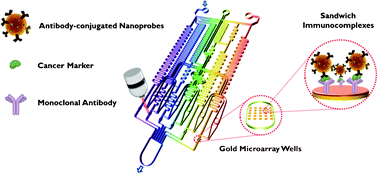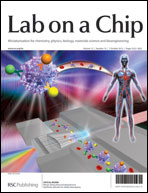Abstract
Here we report the development of a programmable and fully automatic gold array-embedded gradient microfluidic chip that integrates a gradient microfluidic device with gold-patterned microarray wells. This device provides a convenient and reproducible surface-enhanced Raman scattering (


 Please wait while we load your content...
Please wait while we load your content...